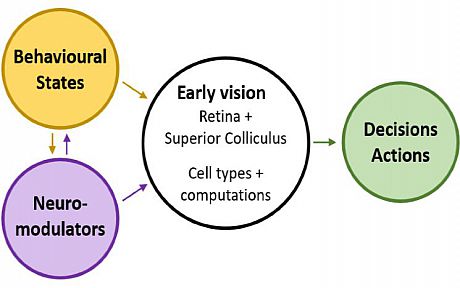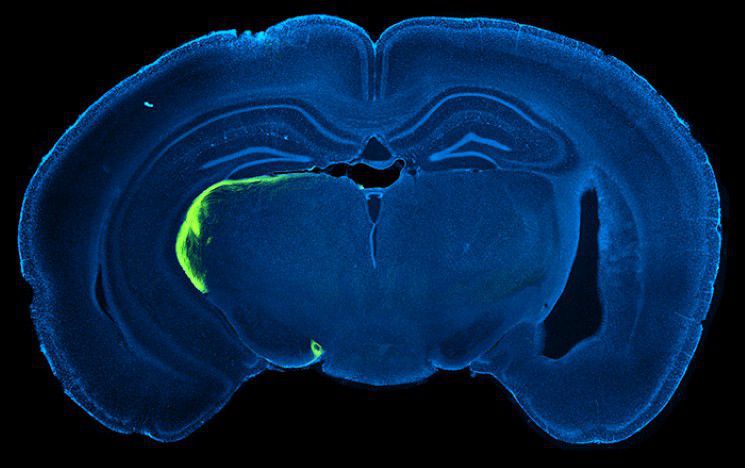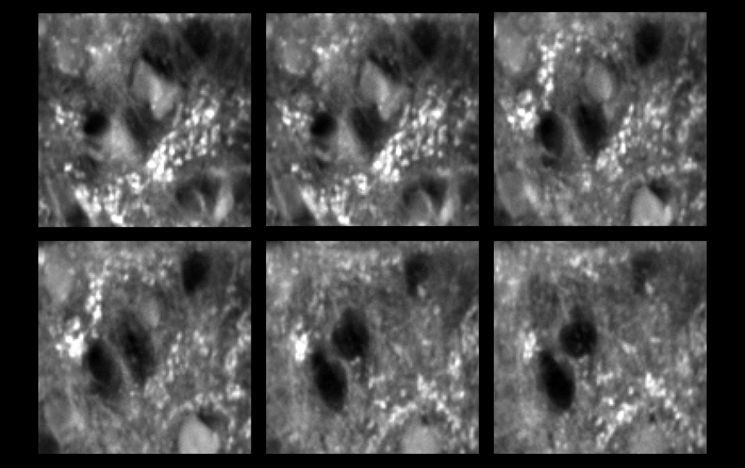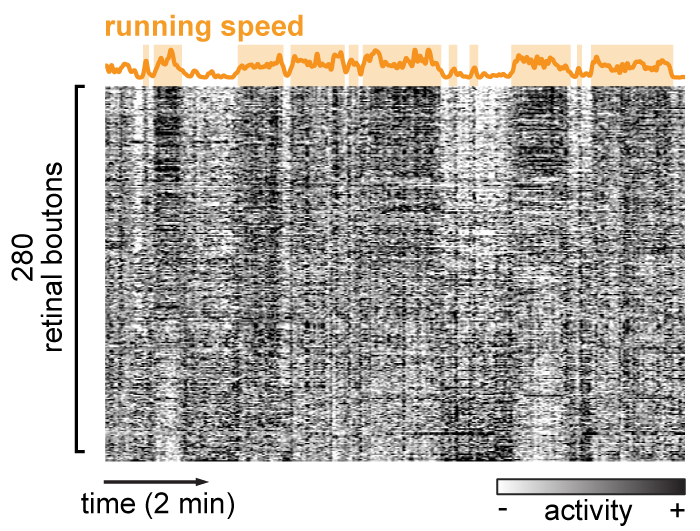Research
We want to uncover why and how behavioural states such as locomotion or different levels of alertness/arousal affect neural processing in the early visual system.
 Information encoded in the first stages of visual processing has traditionally been described as purely visual and independent of the animal’s behaviour or internal state. Only recently have neuroscientists learnt that behavioural and internal states affect neural responses in primary visual cortex, and areas that receive direct input from retina, the visual thalamus (dorsal lateral geniculate nucleus, dLGN) and superior colliculus. Our recent study showed that behavioural states even affect visual responses as early as the output of the retina. These observations fundamentally change our view of information processing in the brain: processing of low-level sensory information is tightly integrated with information about behavioural state. But the functional purpose and underlying mechanisms of this phenomenon are unclear.
Information encoded in the first stages of visual processing has traditionally been described as purely visual and independent of the animal’s behaviour or internal state. Only recently have neuroscientists learnt that behavioural and internal states affect neural responses in primary visual cortex, and areas that receive direct input from retina, the visual thalamus (dorsal lateral geniculate nucleus, dLGN) and superior colliculus. Our recent study showed that behavioural states even affect visual responses as early as the output of the retina. These observations fundamentally change our view of information processing in the brain: processing of low-level sensory information is tightly integrated with information about behavioural state. But the functional purpose and underlying mechanisms of this phenomenon are unclear.
Our research is focused on three projects:
1. Consequences of behavioural modulation on visual processing
One step towards understanding the purpose of behavioural modulation in visual processing is to determine how different cell types in the retina and superior colliculus are modulated. We distinguish cell types based on their visual function (e.g. direction selective or looming detector), their genetic make-up (e.g. excitatory vs inhibitory), and their projection targets (e.g. collicular neurons projecting to dLGN). A second step is to investigate how computation in the early visual system changes during different behavioural states. We study how behavioural states affect neural responses to specific visual features that are extracted in the retina and superior colliculus (e.g. object motion or texture changes) and to behaviourally relevant stimuli (e.g. looming dots reminiscent of an attacking predator).
 Retinal axons following the optic tract to the thalamus and further.
Retinal axons following the optic tract to the thalamus and further.
 Retinal boutons expressing calcium fluorescence in 6 planes of two-photon imaging. Background: neurons expressing a different fluorescence.
Retinal boutons expressing calcium fluorescence in 6 planes of two-photon imaging. Background: neurons expressing a different fluorescence.
2. Mechanisms underlying behavioural modulation in early visual processing
To understand how the brain controls behavioural modulation of the early visual system, we study the effects of neuromodulators like noradrenaline and serotonin on neural activity in the superior colliculus and the retina. We investigate the correlation between neuromodulatory activity in the superior colliculus and behaviour, and the effect of neuromodulators on retinal synapses and collicular neurons.
Responses of retinal boutons to gratings drifting into various directions (arrow)
3. Impact of modulated visual signals on neural control of behaviour
We want to understand how the behavioural modulation of visual signals impacts decision-making and task performance.
We use the deep layers of superior colliculus (SC) as a model system to study neural control of decisions and actions because this brain region plays an important role in controlling orienting movements—such as eye, head and body movements—and decision-making. The deep layers of SC receive visual input directly from superficial SC neurons. The SC thus represents an ideal model system to study the relationship between visual, motor and decision signals.
The outstanding questions that this project addresses are: How are task-related events represented by SC neurons encoding visual input, decisions and actions? How are these responses affected by behavioural states? How does behavioural modulation of visual neurons in superficial SC affect deep SC neurons controlling decisions and thus behavioural performance in a visual discrimination task? The answers to these questions will be a first step towards understanding how behavioural states affect visual and decision procession and ultimately task performance.
 Activity of retinal boutons is correlated with running speed.
Activity of retinal boutons is correlated with running speed.
Methods and tools
We use two-photon imaging and extracellular electrophysiology (Neuropixels probes) to record activity of neurons and axons, while manipulating neural activity using optogenetic and chemogenetic tools.